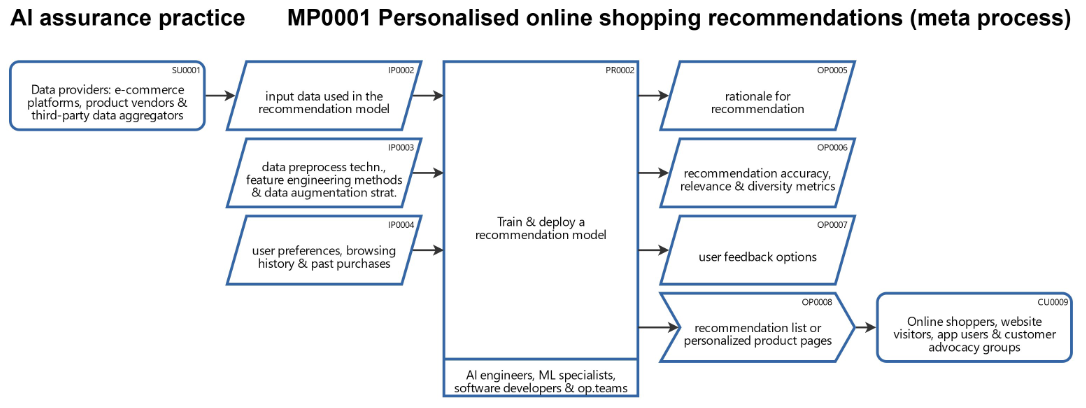How to provide transparency of AI products & services to all stakeholderrs ?

Transparency in AI products & services is essential to promote trust, accountability and ethical use of AI technologies.
To identify and assess potential risks from the deployment of AI algorithms in AI products and service, it is vital to understand its process context.
A SIPOC (Suppliers > Inputs > Process > Outputs > Customers) process model is best-suited for understanding the conceivable risks of AI agents, products and services.
- Explainability of Decisions: AI systems should provide explanations for their decisions and predictions in a clear and understandable manner. Users and stakeholders should be able to understand how AI algorithms arrived at their conclusions, including the factors considered, the data used, and the reasoning behind the decisions.
- Model Transparency: AI developers should disclose information about the underlying models and algorithms used in their products and services. This includes details about model architecture, training data, hyper parameters and any pre-processing or post-processing techniques applied. Providing transparency about model internals enables independent validation, evaluation, and scrutiny of AI systems.
- Data Transparency: AI systems should be transparent about the data they use, including its sources, quality and biases. Organizations should disclose information about data collection practices, data processing methods and any data augmentation or cleaning techniques employed. Transparent data practices help users assess the reliability, relevance, and representativeness of AI-driven insights.
- Performance Metrics and Benchmarks: AI products and services should provide transparency about their performance metrics and benchmarks, including accuracy, precision, recall and other relevant metrics. Organizations should report performance results honestly and comprehensively, avoiding misleading claims or overgeneralizations about AI capabilities.
- Ethical and Regulatory Compliance: AI developers should adhere to ethical principles, regulatory requirements and industry standards governing the responsible use of AI technologies. Transparency should be provided regarding compliance with ethical guidelines, privacy regulations, fairness criteria and other relevant norms. Organizations should disclose information about their ethical frameworks, risk management practices and mechanisms for addressing ethical dilemmas.
- User Control and Consent: AI products and services should empower users with control over their data and preferences. Transparency should be provided about data collection practices, usage policies, and options for user consent and opt-out. Organizations should disclose information about data retention periods, data sharing practices and mechanisms for data access and deletion.
- Bias and Fairness Assessments: AI systems should undergo thorough assessments for biases and fairness disparities across different demographic groups. Transparency should be provided about the methodologies used for bias detection, fairness evaluation and mitigation strategies employed. Organizations should disclose information about demographic representation in training data, bias-sensitive metrics and efforts to address algorithmic biases.
- Security and Privacy Protections: AI products and services should implement robust security and privacy protections to safeguard sensitive data and prevent unauthorized access or misuse. Transparency should be provided about security measures, encryption techniques, access controls and compliance with data protection regulations. Organizations should disclose information about security vulnerabilities, breach response protocols and data breach notification policies.
Using the following link you can access this sandbox process model in the ProcessHorizon web app and adapt it to your needs (easy customizing) and export or print the automagically created visual process map as a PDF document or share it with your peers: https://app.processhorizon.com/enterprises/M7MYP4ks3bT9fmdR9KPGiEbC/frontend

